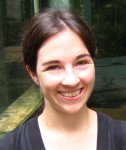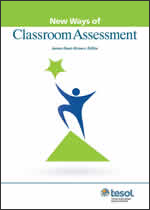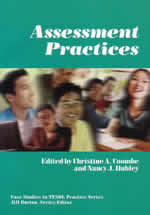TC Quick Tip: If These Photos Could Talk...Using Photo Art to Stimulate Writing and Speaking
by Alexandra Dylan Lowe
 Audience: Low-intermediate to advanced students Audience: Low-intermediate to advanced students
In our image-saturated culture, photos are a surefire way to maximize student talk and stimulate creative writing. This activity allows students to practice the narrative and interrogative forms of present, past, and future tenses, and gets them up and out of their seats. You’ll need at least 20 portrait photographs, with a mix of individual portraits and photos featuring two or more people.
Preparation
Before class begins, prepare a photography gallery by taping 20 or more portrait photographs to the walls, whiteboard, and/or doors of the classroom. I use photos that I cut out from Edward Steichen’s The Family of Man and the New York Times, but there are a number of places online you can access great portraits that are free for classroom use. The Smithsonian Libraries’ Galaxy of Images is a great resource. You can browse by category (they have a “portraits” category), and it will return hundreds of high-res images for download and reproduction. Another good option is the National Portrait Gallery's Permanent Collection Flickr Stream, which includes hundreds of portraits, also acceptable for educational use.
Warm-Up
Ask students whether they like to take photos and whether they have ever seen a memorable photo in the newspaper or on the Internet. Invite them to discuss their experience in small groups.
Activity
- Invite students to imagine that they are in a photography gallery. Ask students to stand up and walk around the “gallery” with a classmate, looking at all the photos and discussing them with their friends. Encourage them to think about which photos they prefer and why (10–15 minutes).
- Invite students to select a photo that “speaks to them” to take back to their seat.
- Tell the students you’d like them to imagine the lives of the person or people in the photo and to write about that life (30 minutes). If necessary, offer some prompts:
- Who are these people? What were their lives like before the photo was taken? What has happened to them up to this point in their lives?
- What are they doing in the photo? Why are they doing it? If there are several people, what is the relationship among them?
- What do you think is going to happen to them next month?
|
- Ask students to put their photos back on the wall. Invite all the students to stand up again. Ask three students to stand next to their chosen photo and retell the story they have invented about the lives of the people in their photo. Invite the other students to circulate and ask questions about the people in the three “featured” photos. Repeat with another group of three students and their chosen photos (10–15 minutes).
- Invite students to sit in groups of four and to pass their written “story” to the student on their left. Ask students to read and discuss their classmates’ stories.
- Ask for a volunteer to retell the story of their photo to the whole class. Project their photo onto a screen for all to see. Invite students to pose questions about the story their classmate has invented.
Expansion activity
Ask six students to sit in chairs in a row at the front of the classroom, facing their classmates, and tell them that they collectively represent one of the characters in a chosen photo*. Ask students in the audience to pose a question to that character. The students on the panel at the front have to answer the question, but each student can supply only one word of the answer. The student on the left end of the row supplies the first word, then the student next to him or her the next word, and so on. This activity helps students focus on the word order in English sentences and to think carefully about subject-verb agreement in various tenses.
*Special thanks to Jeremy Harmer for suggesting this line-up technique in his TESOL webinar, “The Fluency Paradox” (2011), freely accessible to TESOL International Association members.
___________________
Alexandra Dylan Lowe teaches English as a Second Language at SUNY Westchester Community College and has written about self-directed learning strategies for TESOL Connections. She also writes a biweekly blog for TESOL International on the use of authentic teaching materials in the ESL classroom.
TC Monthly Giveaway Congratulations to Sharona Attiya of Rishon-Lezion, Israel, for being the winner of the April 2013 TESOL Connections Monthly Giveaway. Sharona won a free subscription to TESOL Quarterly.
This month, TESOL is giving away two free technology books!
Click here to enter
Drawing closes 29 May 2013, 11:59 pm EST
TESOL Blogs Interested in writing a blog for TESOL?
Contact Tomiko Breland with your idea or for details.
Check out the latest TESOL Blogs:
|
Unearthing the Secrets of Successful Adult ELLs, by Alexandra Lowe
 Years ago, a social worker friend taught me that the best way to help people tackle difficult challenges was to focus on past instances of success rather than on failure. Success, he told me, was worthy of detailed investigation: What factors contributed to successful outcomes? And how can we encourage more of what has worked well in the past for others who are similarly situated? Years ago, a social worker friend taught me that the best way to help people tackle difficult challenges was to focus on past instances of success rather than on failure. Success, he told me, was worthy of detailed investigation: What factors contributed to successful outcomes? And how can we encourage more of what has worked well in the past for others who are similarly situated?
When I began teaching English as a second language, this advice came to mind. As I watched my adult immigrant students struggle to master our verb tenses or wrap their tongues around our sound system, I decided that it might be useful to investigate how successful adult ELLs went about achieving fluency in English. What were the secrets of their success? What strategies had worked well for them? Read More. |
|
Online Education: Ready, Set, Learn!, by Tara Arntsen
 Perhaps as a teacher you’ve found yourself thinking about how great it would be to go back to school and learn more about different aspects of the field of education, brush up on some of your skills, or even learn something entirely new. Or not. Either way, it’s not a bad idea. Let me introduce Coursera and edX, which are both websites that offer free courses from top-notch universities around the world. Read More. Perhaps as a teacher you’ve found yourself thinking about how great it would be to go back to school and learn more about different aspects of the field of education, brush up on some of your skills, or even learn something entirely new. Or not. Either way, it’s not a bad idea. Let me introduce Coursera and edX, which are both websites that offer free courses from top-notch universities around the world. Read More.
|
|
Global Resources in ESP: Two books on Professional Communication, by Kevin Knight
 Hello, ESPers worldwide! Hello, ESPers worldwide!
I am more excited than ever about the future of ESP because there is a growing need worldwide for communication skills in professional and academic settings. At TESOL 2013, I came across a wonderful book at the Routledge booth:
S. Schnurr (2012). Exploring Professional Communication: Language in Action. Abingdon, England: Routledge.
If you are new to the field of professional communication, I highly recommend it.
At TESOL, I find that many members have acquired expertise in training and in obtaining stakeholder agreement, which is necessary for creating and implementing training programs for many different types of organizations. Read More. |
TESOL Bookstore

Now It’s Easy to Assess Your English Language Learners TESOL Press Books on Assessment Can Help
 New Ways of Classroom Assessment, revised New Ways of Classroom Assessment, revised
James Dean Brown, Editor
In this revised edition in the popular New Ways Series, teachers have once again been given an opportunity to show how they do assessment in their classrooms on an everyday basis. This collection of ideas was contributed by teachers whose aim was clearly to help their students. Consequently, the activities are thoroughly integrated into the language teaching and learning processes. More than 100 activities enlighten both students and teachers about the effectiveness of their language learning and teaching but do not stand out as different, formal, threatening, or interruptive in the classroom.
 Assessment Practices Assessment Practices
Christine Coombe and Nancy Hubley, Editors
For language educators, teachers, and testers, these studies analyze assessment design, implementation, and review for classrooms, formal tests, programs, curricula, and self-assessment in global scenarios.
Toll Free: 888-981-0041
E-mail: tesol@brightkey.net
|
 |
|
|
 |
| English Language Instructor, Changsha, China
Senior Fellow, U.S. Department of State English Language Fellow Program, Worldwide
Elementary Teacher, Northridge School, Mexico City, Mexico
English Language Fellow Program, U.S. Department of State English Language Fellow Program, USA
Postdoctoral Scholar, Center for English as a Second Language, University of Kentucky, Kentucky, USA
Teach ESL Internationally on U.S. Embassy Projects, English Language Fellow Program, U.S. Department of State, USA
Want to post your open positions to Job Link? Click here.
To browse all of TESOL's job postings, check out the TESOL Career Center. |
 |
|
 |
|